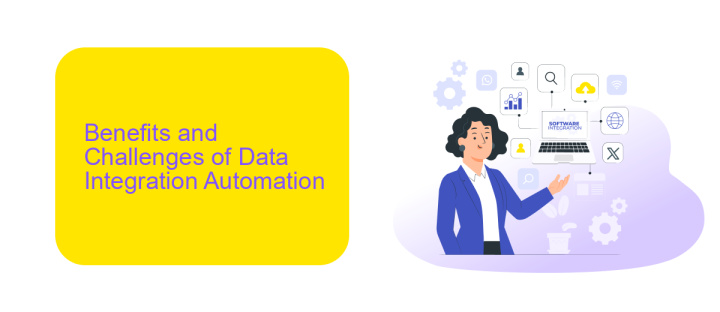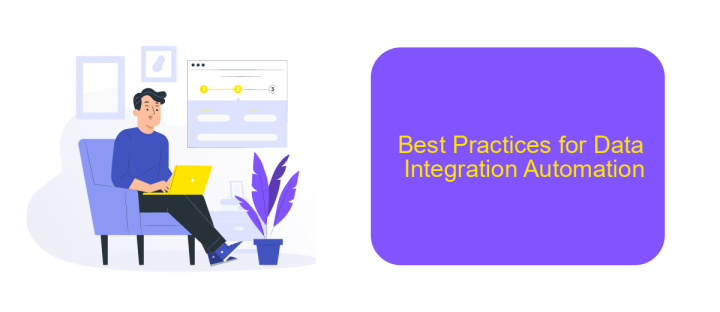Data Integration Automation
Data integration automation is revolutionizing the way organizations handle their data. By seamlessly merging information from various sources, this technology eliminates manual processes, reduces errors, and enhances efficiency. As businesses increasingly rely on data-driven decisions, automated data integration ensures timely, accurate, and comprehensive insights, empowering companies to stay competitive in a rapidly evolving digital landscape.
Introduction
Data integration automation is a transformative approach that simplifies the process of combining data from various sources into a unified view. This methodology not only enhances data accuracy but also significantly reduces the time and effort required for manual data handling. By automating data integration, organizations can achieve seamless data flow, leading to more informed decision-making and improved operational efficiency.
- Increased data accuracy
- Reduced manual effort
- Enhanced decision-making
- Improved operational efficiency
One of the leading tools in this domain is ApiX-Drive, which offers a robust platform for automating data integration. ApiX-Drive enables users to effortlessly connect various applications and services, ensuring real-time data synchronization. With its user-friendly interface and powerful features, ApiX-Drive is an invaluable asset for businesses looking to streamline their data processes and stay competitive in today's data-driven world.
Benefits and Challenges of Data Integration Automation

Data integration automation offers numerous benefits, including enhanced efficiency and accuracy in data handling. By automating data integration processes, organizations can significantly reduce manual errors and save time, allowing employees to focus on more strategic tasks. Tools like ApiX-Drive facilitate seamless integration between various platforms and applications, ensuring that data flows smoothly and consistently across the organization. This not only improves data quality but also enables real-time data access, which is crucial for making informed business decisions.
However, there are challenges associated with data integration automation. One of the primary concerns is the complexity of integrating diverse data sources, which may require significant upfront investment in terms of time and resources. Additionally, maintaining data security and compliance can be challenging, especially when dealing with sensitive information. Despite these challenges, leveraging automation tools like ApiX-Drive can mitigate some of these issues by providing robust integration solutions and support, making the process more manageable and efficient.
Key Technologies and Tools for Data Integration Automation

Data integration automation is essential for streamlining processes and ensuring seamless data flow between various systems. Key technologies and tools enable this automation, making it efficient and reliable.
- ETL Tools: Extract, Transform, Load (ETL) tools like Apache Nifi and Talend are crucial for automating data integration by extracting data from different sources, transforming it into a usable format, and loading it into destination systems.
- API Management: Tools such as ApiX-Drive facilitate the automation of data flow between applications by providing easy-to-use interfaces for setting up and managing integrations.
- Data Integration Platforms: Platforms like Informatica and MuleSoft offer comprehensive solutions for integrating data across diverse environments, supporting both on-premise and cloud-based systems.
- Data Orchestration: Technologies like Apache Airflow enable the scheduling and monitoring of complex data workflows, ensuring that data integration processes run smoothly and efficiently.
Utilizing these technologies and tools can significantly enhance the efficiency and reliability of data integration processes. By automating repetitive tasks and ensuring data consistency, organizations can focus on leveraging insights and driving business growth.
Best Practices for Data Integration Automation

Implementing data integration automation effectively requires adherence to several best practices. Proper planning and execution can ensure seamless data flow across systems, reducing errors and enhancing efficiency.
First, it's crucial to define clear objectives and understand the data sources involved. This helps in setting up the right integration workflows and selecting appropriate tools. Regular monitoring and maintenance of these workflows ensure they remain efficient and effective.
- Utilize robust integration platforms like ApiX-Drive to streamline connections between different systems.
- Ensure data quality by implementing validation checks and error handling mechanisms.
- Automate data synchronization to minimize manual intervention and reduce the risk of human error.
- Regularly back up data to prevent loss in case of system failures.
- Document all integration processes for future reference and troubleshooting.
By following these best practices, organizations can achieve efficient and reliable data integration automation. Leveraging tools like ApiX-Drive can further simplify the process, ensuring smooth and consistent data flow across various platforms.
- Automate the work of an online store or landing
- Empower through integration
- Don't spend money on programmers and integrators
- Save time by automating routine tasks
Future Trends and Outlook
As we look to the future of data integration automation, several trends are poised to reshape the landscape. One significant trend is the increasing adoption of AI and machine learning algorithms to enhance the accuracy and efficiency of data integration processes. These technologies will enable systems to learn from past integrations, predict potential issues, and automatically adjust configurations for optimal performance. Additionally, the rise of low-code and no-code platforms will democratize data integration, allowing non-technical users to create and manage integrations with minimal effort.
Another key trend is the growing importance of real-time data integration. Businesses are increasingly relying on up-to-the-minute data to make informed decisions, necessitating the need for systems that can handle continuous data streams. Services like ApiX-Drive are at the forefront of this evolution, providing robust tools for seamless and automated data integration across various platforms. As companies continue to prioritize agility and scalability, the demand for such advanced integration solutions will only increase, driving further innovation in the field.
FAQ
What is Data Integration Automation?
Why is Data Integration Automation important for businesses?
How can I start automating data integration in my organization?
What challenges might I face when implementing Data Integration Automation?
Can Data Integration Automation be customized to fit specific business needs?
Apix-Drive is a universal tool that will quickly streamline any workflow, freeing you from routine and possible financial losses. Try ApiX-Drive in action and see how useful it is for you personally. In the meantime, when you are setting up connections between systems, think about where you are investing your free time, because now you will have much more of it.


